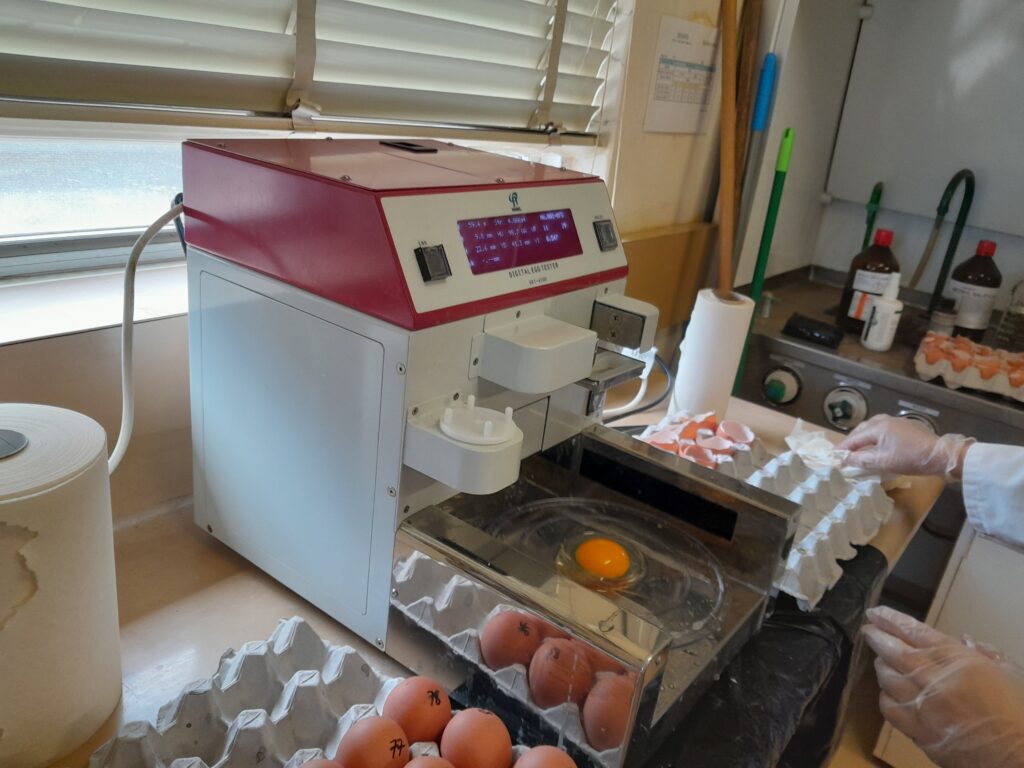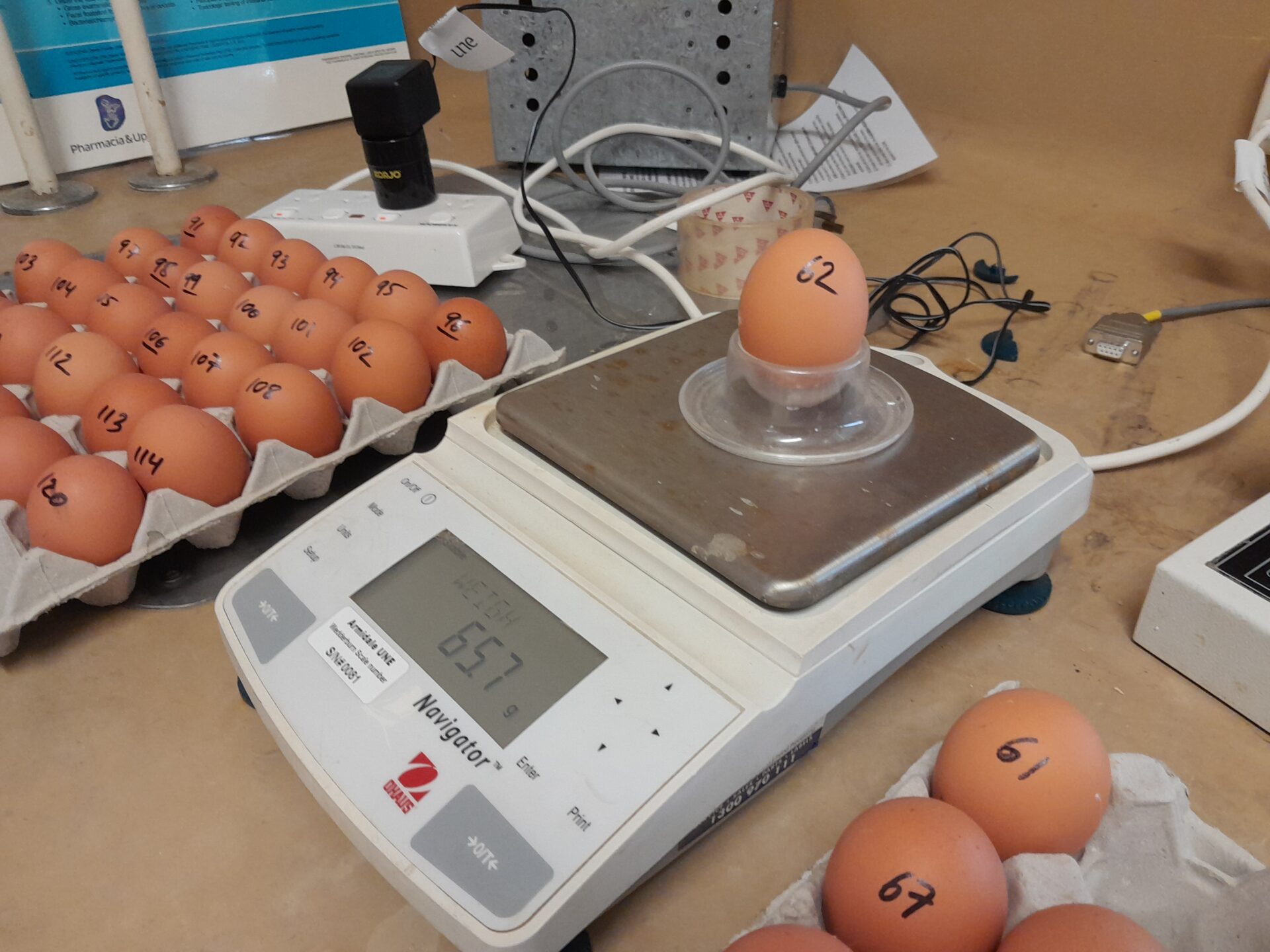A recently completed PHA trial by Dr Moss and Dr Dao at the University of New England has demonstrated that AM/PM feeding of free-range laying hens provides production, health and welfare benefits under Australian conditions.
In Australian laying hen production, it is common to feed 3 diet phases across the laying period to meet the nutrient requirements of the laying hens on a day-to-day basis. However, due to the hen’s cyclic reproductive physiology, high dietary protein and energy levels are required for the yolk and albumin formation in the early morning and high dietary Ca levels are required for the membrane and shell formation in the afternoon/evening. Therefore, feeding one diet across the day may be problematic, as there is excess Ca in the morning and excess protein/amino acids and energy in the afternoon/evening. To minimise excess nutrients, AM/PM feeding may be used where a high energy and protein diet with lower Ca is provided in the morning (AM) and a lower energy and protein diet with higher Ca is fed in the afternoon/evening. AM/PM feeding has been illustrated to improve feed efficiency, eggshell quality, and reduce environmental pollution in laying hens. However, the impacts on welfare of laying hens in a free-range system under the AM/PM feeding regime are yet to be determined. As AM/PM feeding may reduce feather pecking and cannibalism issues, this is an important nutritional strategy to test with Australian laying hen diets in a free-range setting.
Therefore the aim of the study carried out at the University of New England was to determine the effects of feeding AM/PM diets on laying performance, egg quality, nutrient digestibility, skeletal health, and welfare and behavioural indicators of free-range laying hens under Australian conditions.
Two mash dietary treatments; conventional layer hen diet and AM/PM hen diets were offered to 9 replicate pens of 20 hens each, giving a total of 360 hens (18 pens) from 34 to 53 weeks of age. Hens offered the AM/PM diets received the AM diet from 8 am to 4 pm and the PM diet from 4 pm to 8 am. Egg weight and egg production were measured daily and feed consumption and feed conversion ratio (FCR) were measured weekly. Egg quality and bone quality were measured at week 53. Additionally, hen behaviour was assessed from 49 to 50 weeks of age and individual ranging behaviour was monitored by Radiofrequency Identification (RFID) technology from 39 to 48 weeks of age.
The results showed that AM/PM feeding tended to improve laying hen performance under Australian conditions by increasing egg mass by 2.15% (60.4 vs 59.1 g/hen/day, P = 0.086) and improved feed efficiency by 8.34% (2.231 vs 2.436 kg feed/kg egg, P < 0.05) compared to the control conventional feeding regime over 20 weeks of the study. Hens offered the AM/PM diet also had higher yolk colour score compared to the hens offered the control diet at week 53 (12.3 vs 11.6, P < 0.01). The higher yolk colour score in the AM/PM hens might be attributed to the longer time spent on the range (2.85 vs 2.47 hours/day, P < 0.001) eating materials which contain natural pigments. Hens on the AM/PM treatment had higher tibia ash content (43.3% vs 41.6%, P < 0.05) and breaking strength (196 vs 168 Kgf, P < 0.05) at week 53. Furthermore, AM/PM hens were shown to be less prone to feather pecking than the control hens (0.39% vs 1.15%, P = 0.01).
Thus, this study demonstrated the production, health, and welfare benefits of AM/PM feeding under Australian free-range conditions.





